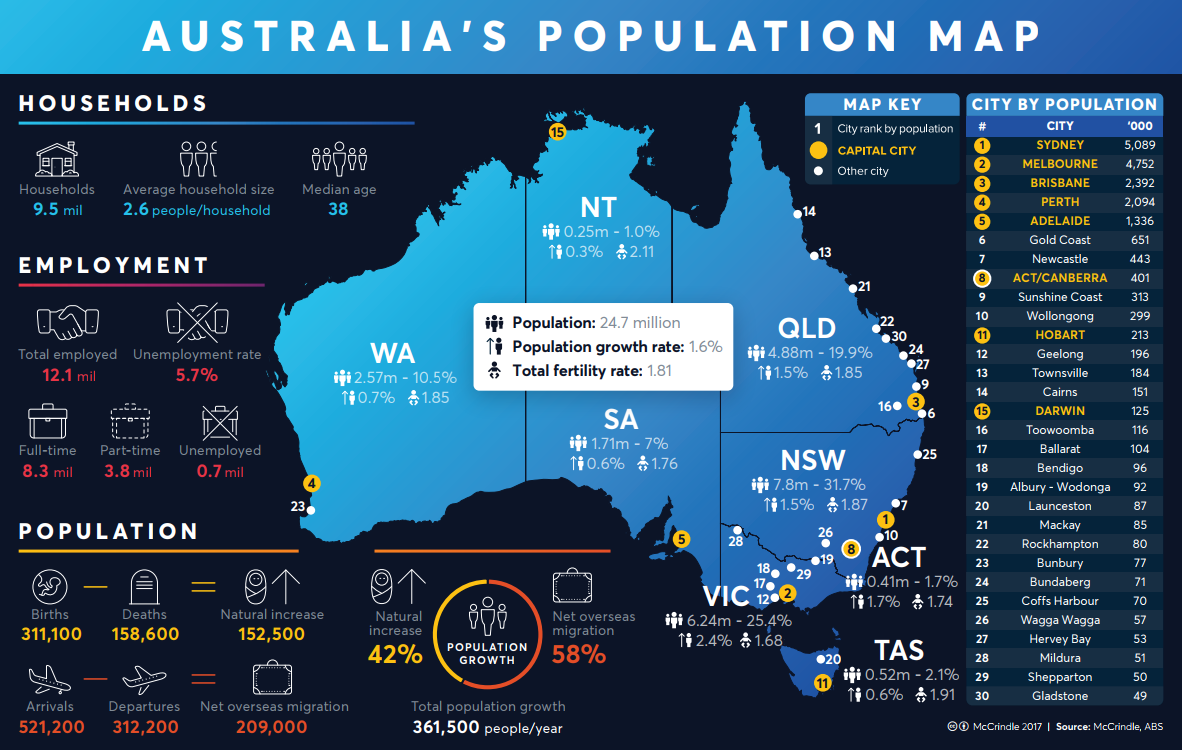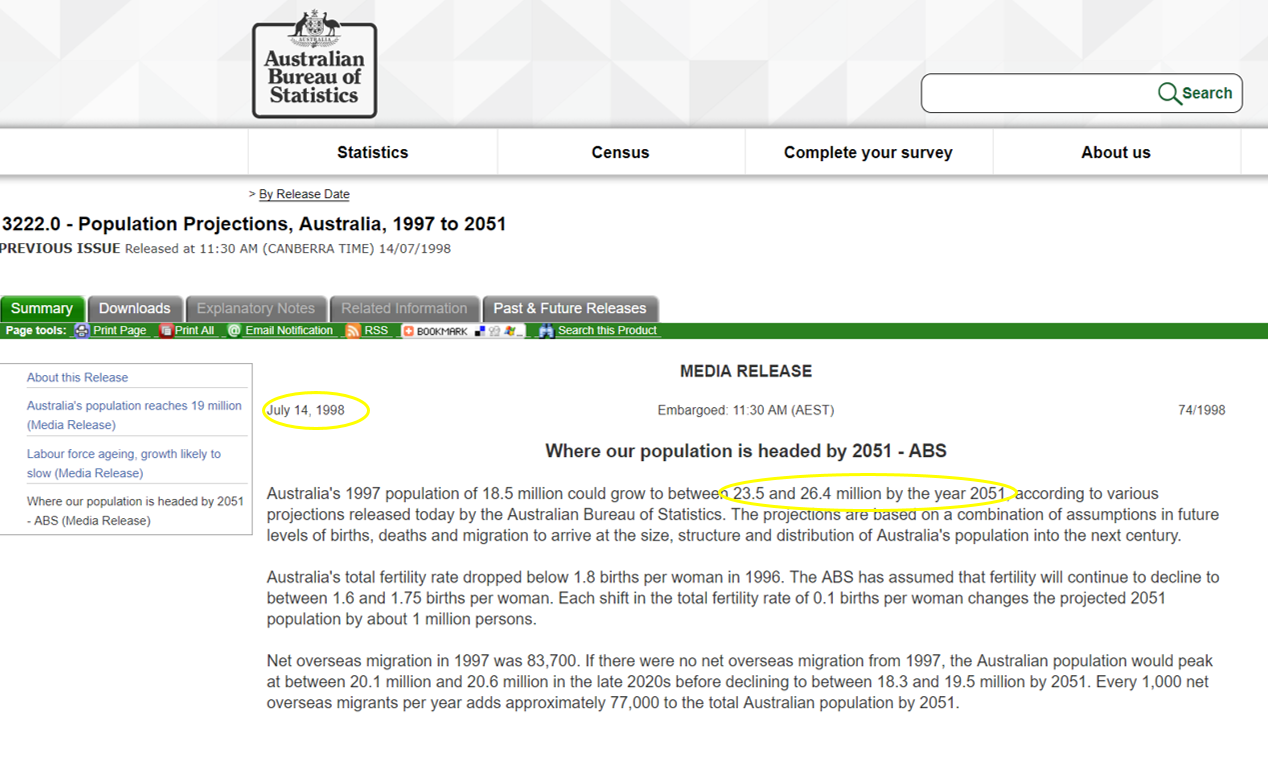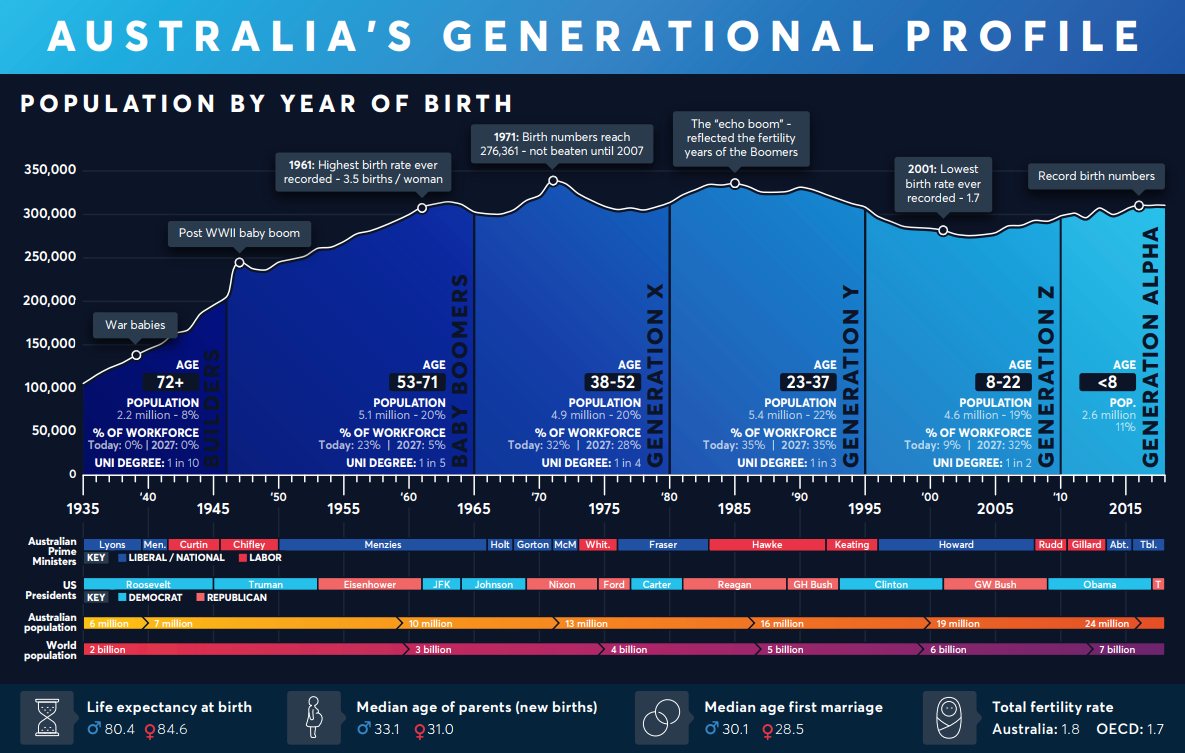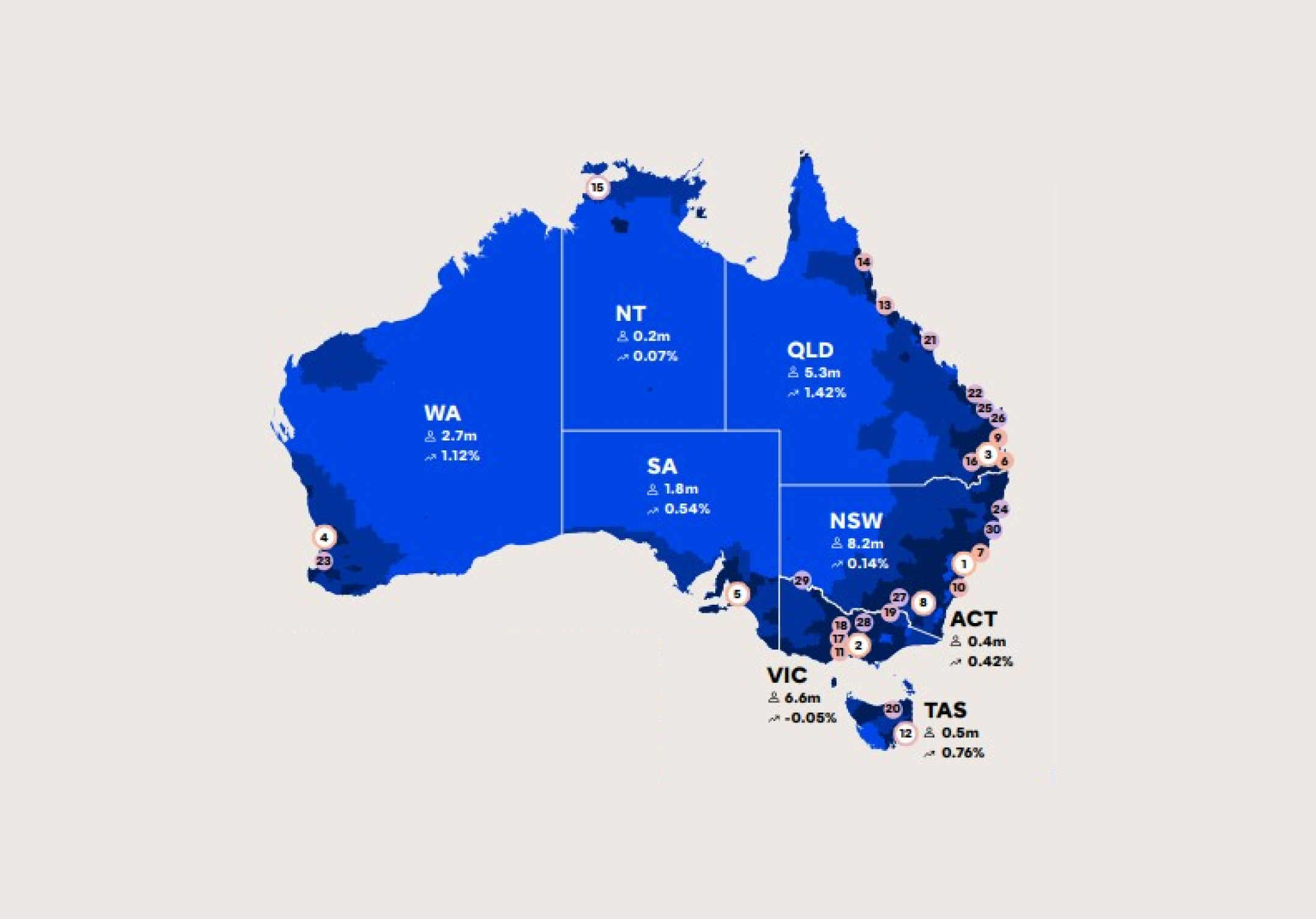The Rise and Rise of Australia’s Population


Australia has increased its population by one third in the last 20 years, from 18.5 million in 1997 to 24.7 million people currently. But more remarkable is that this record population growth has exceeded all forecasts.
In 1998, the Australian Bureau of Statistics predicted that, based on low-growth assumptions, Australia’s population would reach 23.5 million people in 2051, a benchmark it went on to achieve in July 2014. The mid-growth forecast of 24.9 million people by 2051 will be reached in the middle of next year, 33 years early! The upper end forecast of 26.4 million, based on high-growth assumptions, will be reached in mid-2021, less than four years away.

What has caused such population growth?
The current growth patterns of Australia will lead us to a population of 38 million by 2051, around 12 million higher than even the high-ball forecasts of the late 1990’s. It’s not that the calculations were wrong, it’s that migration policy changes as well as longevity increases and a solid birth rate have defied the trends that were evident twenty years ago.
Back then it was assumed that the total fertility rate (babies per woman in a lifetime) would remain low. However, today’s TFR of 1.81 is above even the highest assumption allowed for in the 1990’s of 1.75.
It was also thought that life expectancy at birth would hit a high of 82 for males and 86 for females by 2051. However, current life expectancy is already closing in on 81 for males and 85 for females and will reach these 2051 targets decades early.
Net Overseas Migration the biggest growth factor
The biggest growth factor that has blown out previous population modelling has been the rise and rise of Australia’s net overseas migration. In 1998 it was thought that it would grow our population annually by around 70,00, or at the most, 90,000. In the last 12 months, Australia has added 231,900 through net migration which is more than 2.5 times even the high-forecast of two decades ago.

Expected growth for our major cities
The expectations for our largest cities back in this era were also well below what has eventuated. This 1998 report expected Melbourne to reach a population of between 3.6 and 4.5 million by 2051. It is currently well above this range at 4.8 million. Sydney was predicted to reach between 4.7 and 6.2 million by the middle of this century. It is currently around 5.1 million and will reach the higher forecast within a decade, 23 years early.
Australia’s population growth among the highest in the developed world
While the late 1990’s may not seem like that long ago- John Howard was Prime Minister and Bill Clinton was the US President, the last two decades have seen significant shifts in our demographic trends. Back then, slowing population growth was responded to with policy changes like the baby bonus and efforts to increase overseas migration. Australia’s population growth is now one of the highest in the developed world.
We have added 390,000 people to our population in the last 12 months, which is like adding three cities the size of Darwin to our population each year. Sydney is now home to more people than the whole country of New Zealand. Speaking of which, New Zealand, back in 1998 was expected to reach 4.7 million in 2050- its population currently exceeds 4.8 million. Melbourne is growing even faster and rather than having 1.7 million fewer people than Sydney in 2051 as was predicted, it will likely overtake Sydney to be Australia’s largest city by this year.
Lessons to be learnt
The lesson for policy makers, urban planners and governments alike, is to keep a close eye on the population forecasts and plan early for the growth that is being experienced so that our cities are not left short of infrastructure. While population growth can’t realistically be stopped, it must be better planned for and managed to ensure the Australian lifestyle continues. And when in doubt, assume the higher growth forecasts not the lower ones. I’m yet to see an Australian population forecast that needs adjusting down.
Mark McCrindle, Demographer and Social Researcher
For more information
If you found this article interesting, download our free McCrindle Insights Report for more information on the trends shaping the future of Australia.
For media commentary contact us on 02 8824 3422 or at [email protected]




